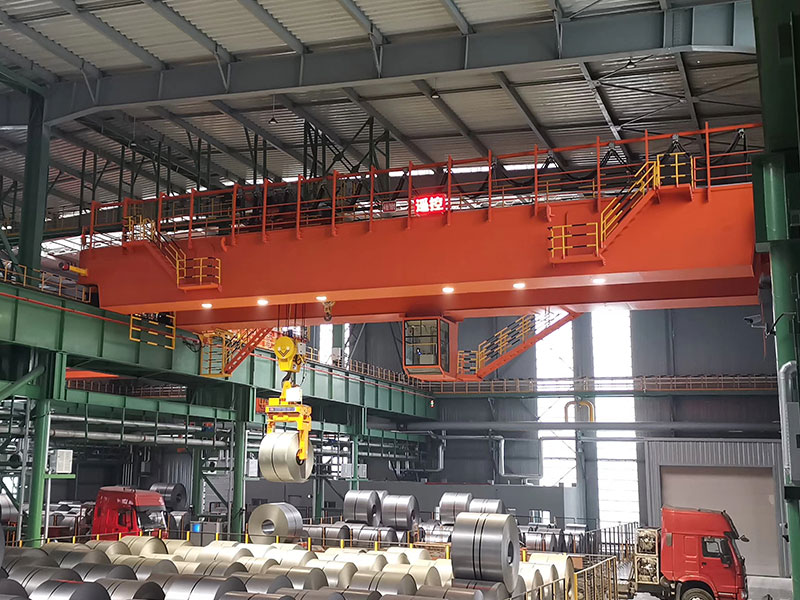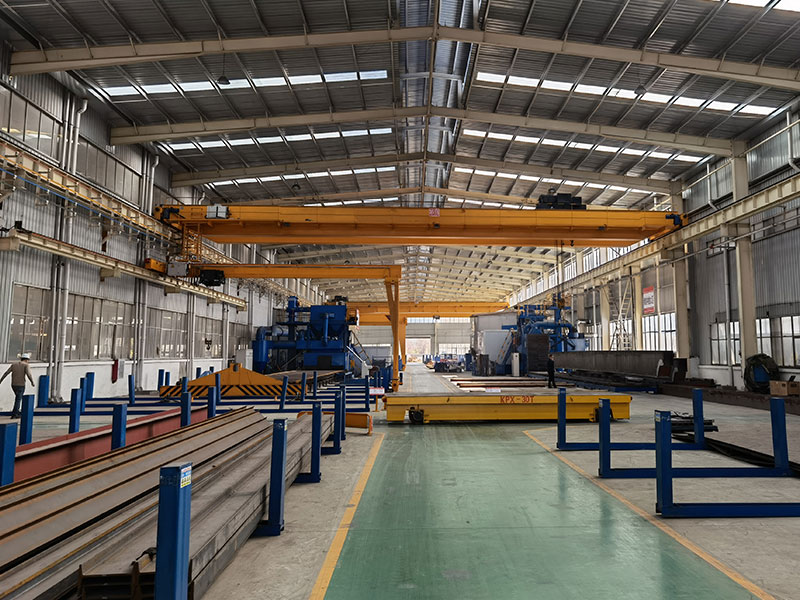In modern material handling environments, overhead cranes play an indispensable role in moving heavy loads efficiently and safely. Among these, the 40-ton overhead crane is a popular choice for heavy-duty applications such as manufacturing, steel processing, warehousing, shipbuilding, and power plant operations. However, a key challenge in crane operations lies in controlling the sway of suspended loads, which can be dangerous, reduce operational precision, and slow down productivity. This is where anti-sway systems prove to be transformative. This article explores the integration of anti-sway systems in 40-ton overhead crane operations, highlighting their working principles, benefits, integration process, and impact on productivity and safety.

Understanding Load Sway in Overhead Cranes
When an overhead crane moves a suspended load horizontally—whether through trolley travel or bridge motion—it causes a pendulum-like effect where the load sways due to inertia. The heavier the load and the faster the movement, the greater the sway. For a 40 ton overhead crane lifting large, dense materials, this sway can be particularly dangerous, especially in confined or busy workspaces. Load sway can:
-
Prolong handling time as operators must wait for the load to stabilize.
-
Reduce positioning accuracy.
-
Increase the risk of collisions with obstacles or workers.
-
Cause damage to the load, surrounding structures, or the crane itself.
-
Contribute to operator fatigue due to constant manual sway correction.
An anti-sway system addresses these issues by minimizing load movement during operation, allowing safer and faster handling of heavy materials.
What is an Anti-Sway System?
An anti-sway system is a control technology that mitigates the oscillation of suspended loads during crane operation. It can be implemented using mechanical, electronic, or software-based solutions. Modern systems typically use advanced control algorithms combined with motion sensors and programmable logic controllers (PLCs) to detect and correct sway dynamically.
These systems are particularly beneficial in larger capacity cranes such as the 40-ton double beam overhead crane, where traditional sway control methods—like manual braking or slowing down movements—are inefficient and inadequate for high-volume operations.
Key Components of an Anti-Sway System
Anti-sway systems generally include the following components:
1. Sensors
-
Measure load position, movement speed, and swing angle.
-
Provide real-time data to the control unit for precise sway analysis.
2. PLC (Programmable Logic Controller)
-
Acts as the brain of the system.
-
Processes sensor data and controls motor functions to counteract swing forces.
3. Inverter or VFD (Variable Frequency Drive)
-
Controls motor speed with high precision.
-
Adjusts acceleration and deceleration profiles based on input from the PLC to minimize sway.
4. Human-Machine Interface (HMI)
-
Allows operators to monitor anti-sway functions.
-
May include alerts, diagnostics, and system customization options.

Integration in 40 Ton Overhead Crane Operations
Assessment and Planning
Before integrating an anti-sway system, a technical assessment of the existing crane is required. Key considerations include:
-
Crane configuration (single/double girder, under/top running crane).
-
Type of control (pendant, cabin, remote).
-
Speed and acceleration requirements.
-
Application environment (indoor, outdoor, temperature, humidity).
Crane retrofitting for anti-sway requires collaboration between engineers, control system specialists, and crane manufacturers to ensure compatibility and effectiveness.
Installation and Commissioning
The system installation typically involves:
-
Mounting Sensors: Placed on the hoisting mechanism to track movement.
-
Installing PLC and Control Panels: Integrated into the existing crane control cabinet.
-
Wiring and Configuration: Connecting sensors, VFDs, and HMI to the PLC.
-
Programming: Software tuning to adjust for load weight, crane geometry, and operating parameters.
-
Testing and Calibration: Ensuring the system responds correctly to various load conditions and movements.
Benefits of Anti-Sway System Integration
1. Enhanced Safety
Safety is the foremost advantage. With minimized sway, there’s a lower risk of the load hitting workers, structures, or equipment. For cranes operating in crowded facilities or near expensive machinery, this is critical.
2. Improved Precision
Anti-sway systems allow for more precise positioning of the load. Operators can place heavy items with greater accuracy without needing to make multiple micro-adjustments.
3. Higher Operational Speed
By controlling sway, operators can use higher travel speeds without risking load instability. This reduces cycle time and boosts overall productivity.
4. Reduced Wear and Tear
Minimizing sway decreases stress on mechanical components such as brakes, motors, cables, and end stops. This leads to longer equipment life and lower maintenance costs.
5. Operator Comfort and Efficiency
Less manual correction is required, reducing operator fatigue and enhancing job satisfaction. In remote control or automated setups, anti-sway is almost essential for efficient handling.
Applications for 40 Ton Overhead Cranes with Anti-Sway
Steel Industry
In steel plants, 40-ton cranes are used to handle heavy coils, molds, or slabs. An anti-sway system ensures rapid, controlled movement through narrow production aisles.
Shipbuilding
Shipyards require precise placement of large, expensive components. Anti-sway systems help lift and align engine parts, hull structures, and prefabricated blocks with exactitude.
Energy Sector
Power plants utilize heavy-duty overhead bridge cranes to install and maintain turbines and generators. Controlled movement ensures safety around sensitive and high-value equipment.
Precast Concrete Plants
When moving large concrete beams or panels, even a minor swing can cause misalignment or impact. Anti-sway helps maintain alignment in automated or synchronized lifting setups.
Challenges and Considerations
While the advantages are significant, anti-sway system integration involves a few challenges:
-
Cost: Initial installation and commissioning add to the crane’s capital cost. However, this is often offset by reduced downtime and increased output.
-
Compatibility: Legacy cranes may require substantial upgrades to integrate modern systems.
-
Training: Operators and maintenance staff need proper training to leverage the full benefits.
-
Environmental Factors: Wind or external motion (especially in outdoor cranes) can affect sway behavior. Systems must be fine-tuned accordingly.
Conclusion
Integrating an anti-sway system into a 40-ton overhead crane is a smart investment that enhances safety, precision, and productivity. As industries move toward digitalization and automation, such smart control technologies are becoming standard rather than optional. Whether in steel mills, ports, or power plants, controlling load sway is critical to operational efficiency. For businesses seeking to upgrade their lifting operations, incorporating anti-sway systems in their 40-ton overhead cranes is a forward-thinking decision that pays dividends in the long run—both in terms of performance and peace of mind.